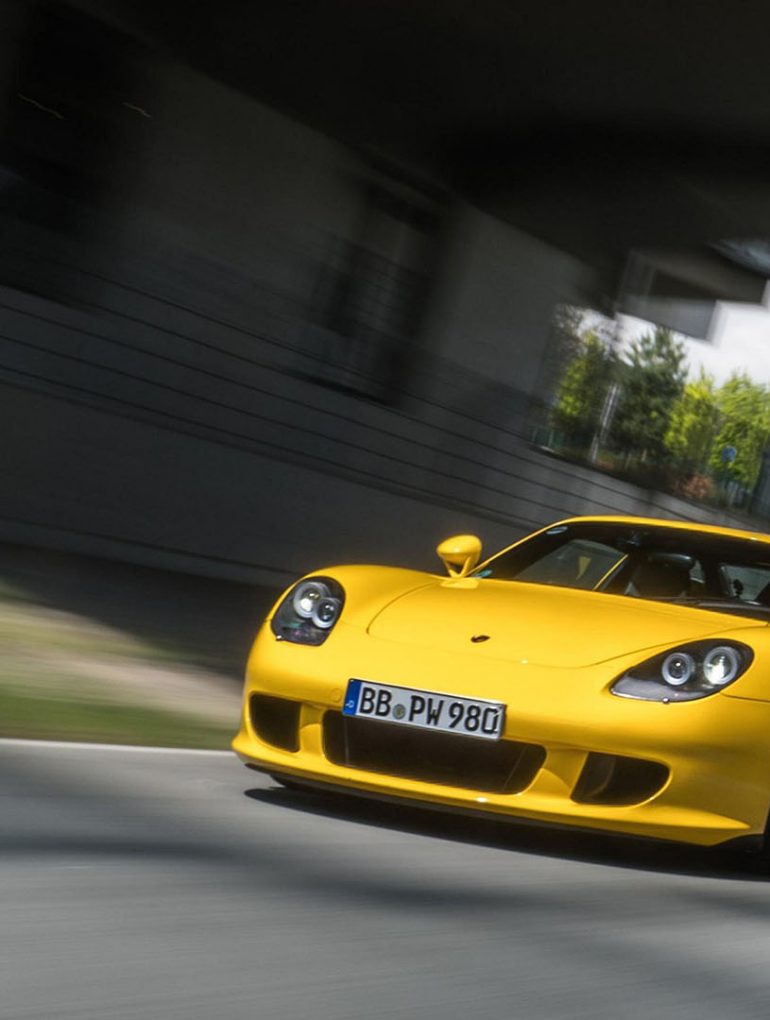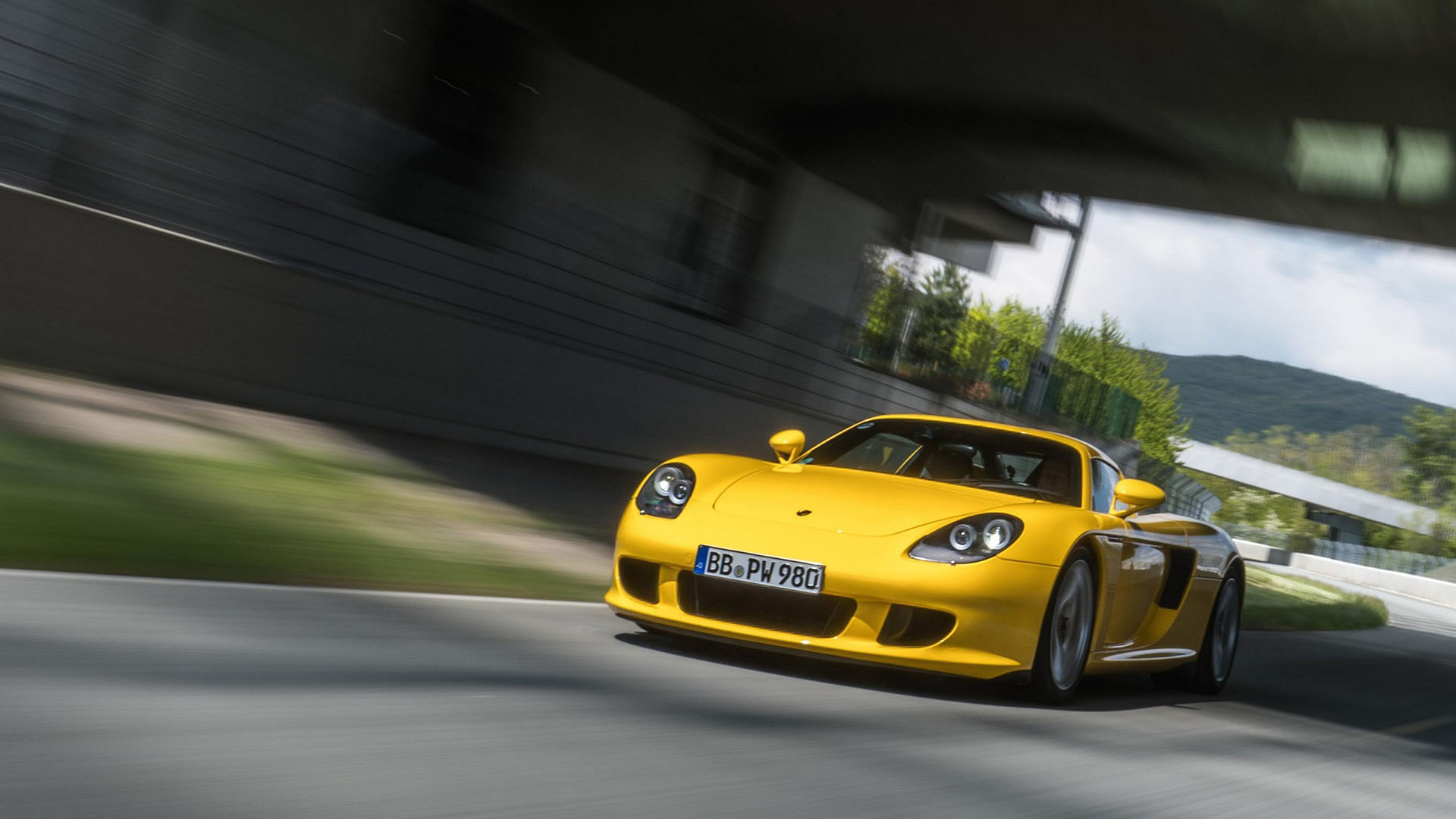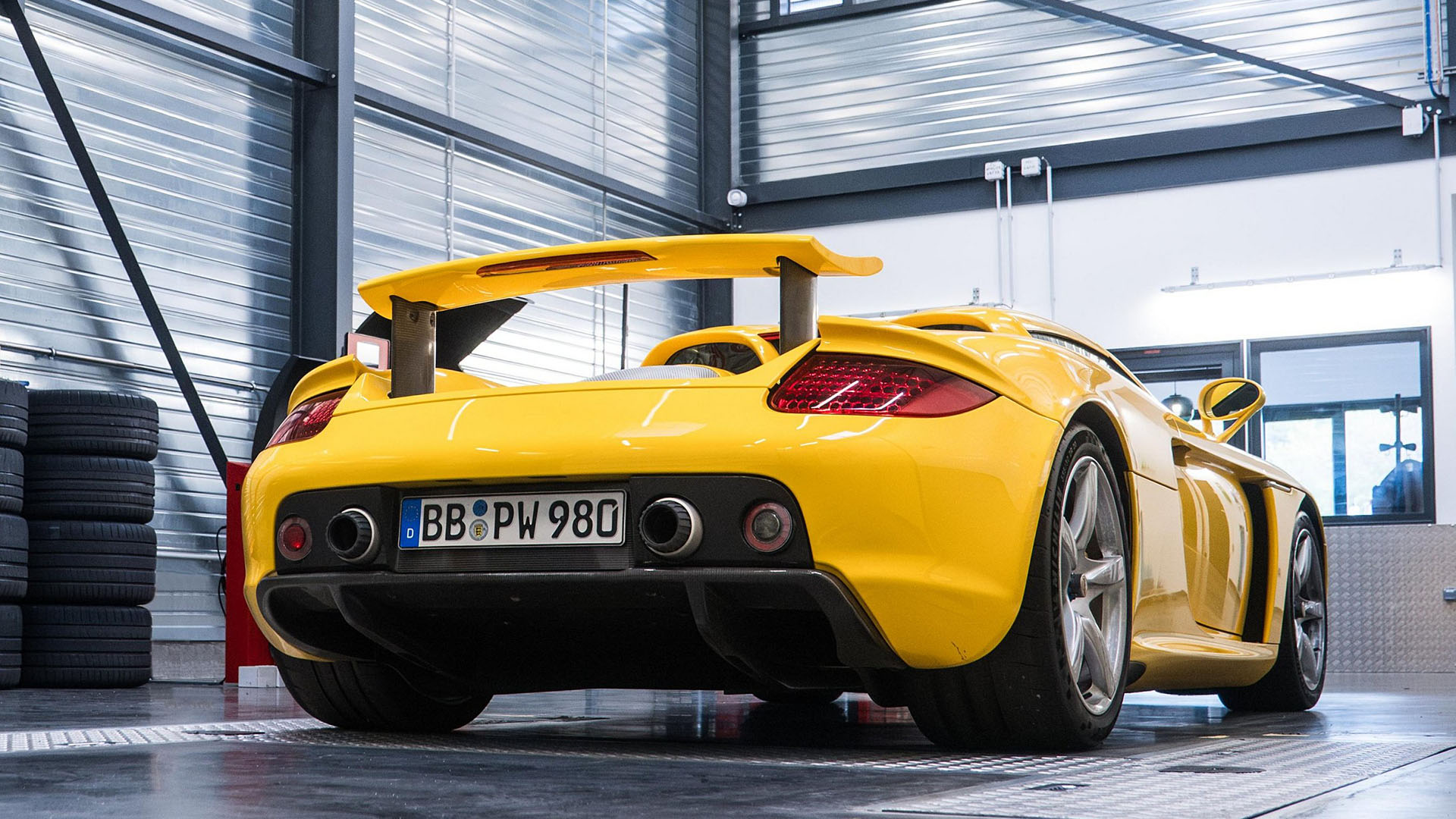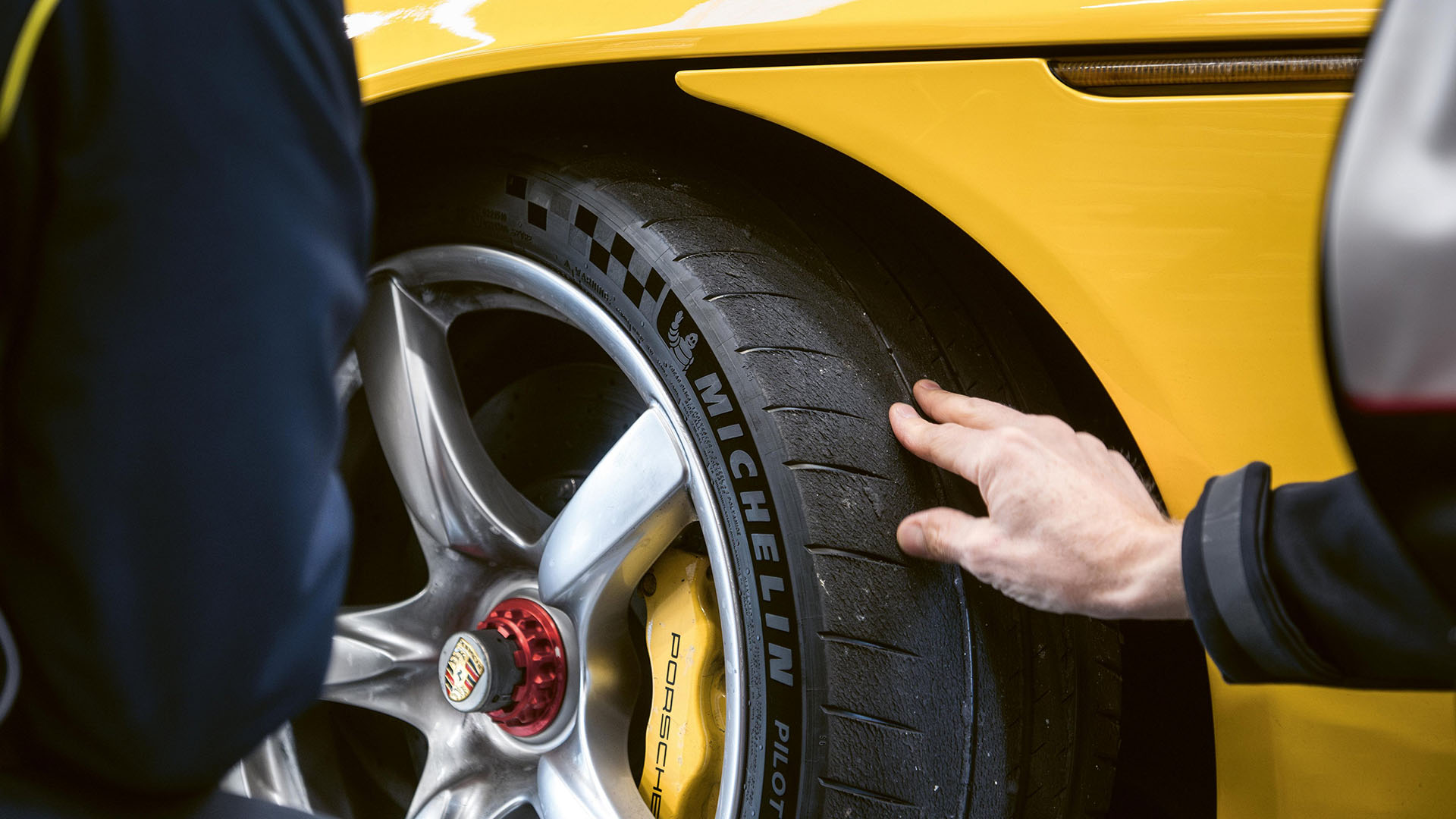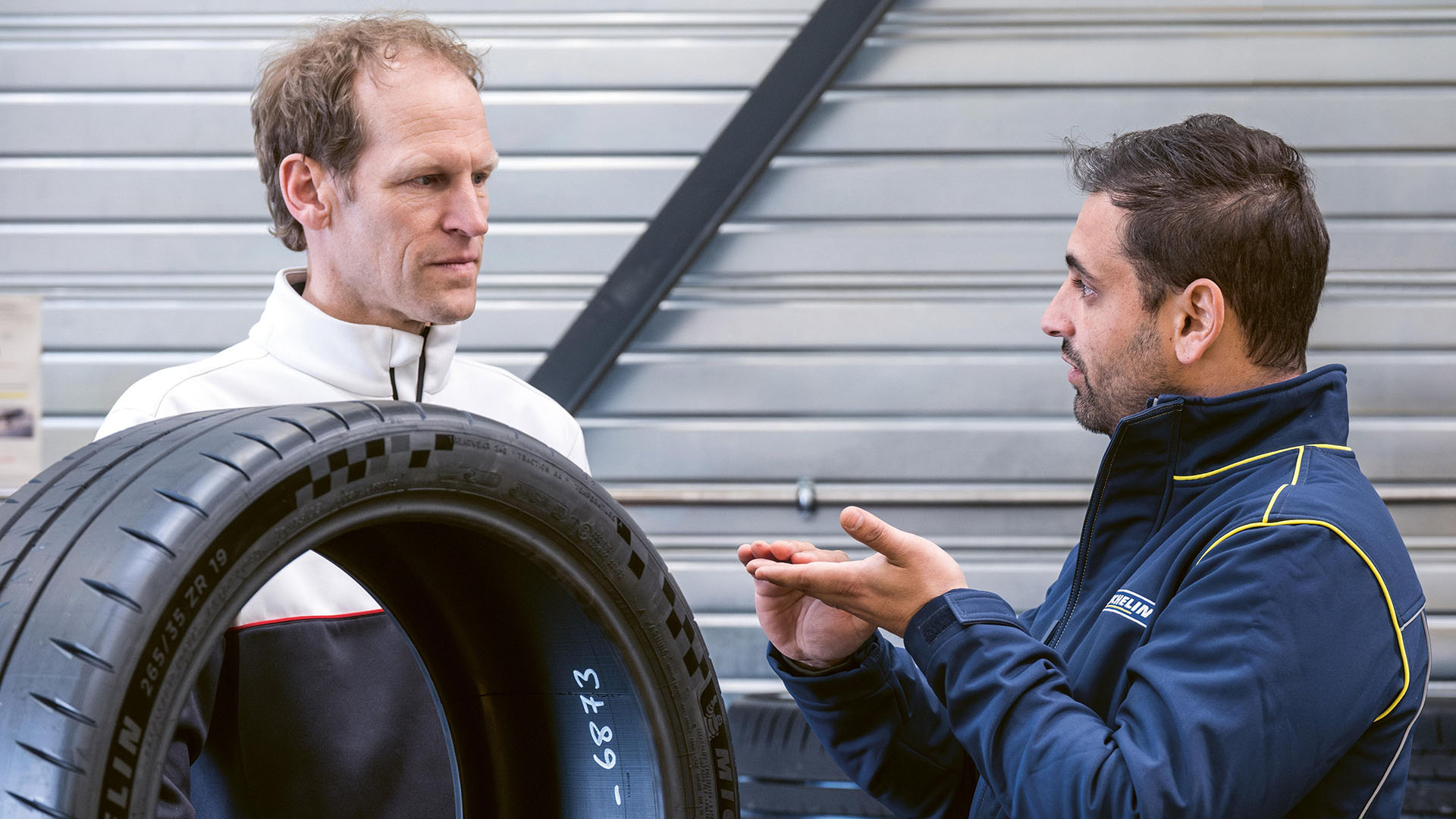Porsche has developed a new tire for the Carrera GT with its longstanding partner, Michelin. The super sports car, of which 1,270 examples were built from 2003 to 2006, benefits from this with even greater precision and further enhanced performance potential. Almost 20 years after Carrera GT production ended, Porsche presents a new ultra-high-performance tire for the super sports car in collaboration with Michelin. The rubber compound and the construction of the high-performance tire are optimized using the latest in tire technology. This improves the capabilities on wet and dry pavement. Porsche development driver and brand ambassador Joerg Bergmeister has tested the Carrera GT equipped with the new Michelin Pilot Sport Cup 2. “The Carrera GT is an absolute dream car. This is why I’m particularly excited that the new tire raises the performance of this legend to a new level,” said the former Porsche factory driver.
When it debuted in 2003, the Porsche Carrera GT was one of the world’s fastest-production cars. Porsche originally developed its naturally aspirated V10 engine to compete at the 24 Hours of Le Mans endurance race. For the Carrera GT, the engine’s displacement was increased from 5.5 to 5.7 liters. The engine makes 605 hp (450 kW) and 435 lb.-ft. or torque, enough to propel the 3,043-lb. vehicle from 0 to 62 mph in 3.9 seconds and on to a top track speed of 205 mph. When it was first launched, bespoke Michelin Pilot Sport PS2 tires were fitted to the car from the factory. In 2013, a new Pilot Super Sport tire was developed for the Carrera GT and offered as an update. These tires will now be replaced by the newly developed Pilot Sport Cup 2, which will be marked with the N-designation exclusively reserved for tires that are specifically developed for Porsche vehicles. In their initial configuration, they are marked by an N0 designation.
“It’s very unusual for new tires to be developed for a 20-year-old vehicle. This underscores how important the Carrera GT is for Porsche and their customers to this day,” says Jörg Bergmeister. The goals of development, which Bergmeister was heavily involved in, were to further improve driving dynamics on dry and wet pavement. To accomplish this, two different rubber compounds are used in the tread (Dual-Compound-Technology). “On the inner shoulder and tread blocks of the tire, silica is used to achieve the optimal compound characteristics for wet grip. Meanwhile, the mixture at the outer shoulder and outer tread blocks of the tire is responsible for dry grip. Here, one of the most important ingredients is industrial soot,” said Michelin tire development engineer Mathieu Greco, who oversees tire development for Porsche sports cars.
Racetrack-based performance and handling tests at the Nürburgring-Nordschleife also helped optimize the tire surface. “The improvements that the engineers were able to achieve in terms of feedback during spirited driving is impressive,” Bergmeister said. “The point at which the tire begins to break traction is very clearly communicated.” The improved tires contribute noticeably to driving dynamics and the potential to achieve quicker lap times compared to the previous tire. Bergmeister explains: “The new tires do not just make the Carrera GT faster, they also make it easier for the driver to pilot the car in a spirited manner. This demonstrates that tire development never stands still. In particular, motorsport as a development platform enables technology to make its way into production tires. This technology transfer noticeably improves performance.”
In addition to providing more feedback, the newly developed Pilot Sport Cup 2 also offers the potential for shorter braking distances. The braking distance from 62 mph can be reduced by up to 8 feet. From 124 mph, the Carrera GT can come to a stop up to 39 feet shorter than before. “Tires that are specifically developed for a vehicle are always an advantage. Not just in terms of performance, but also stopping ability. This data shows that impressively,” Bergmeister said.


